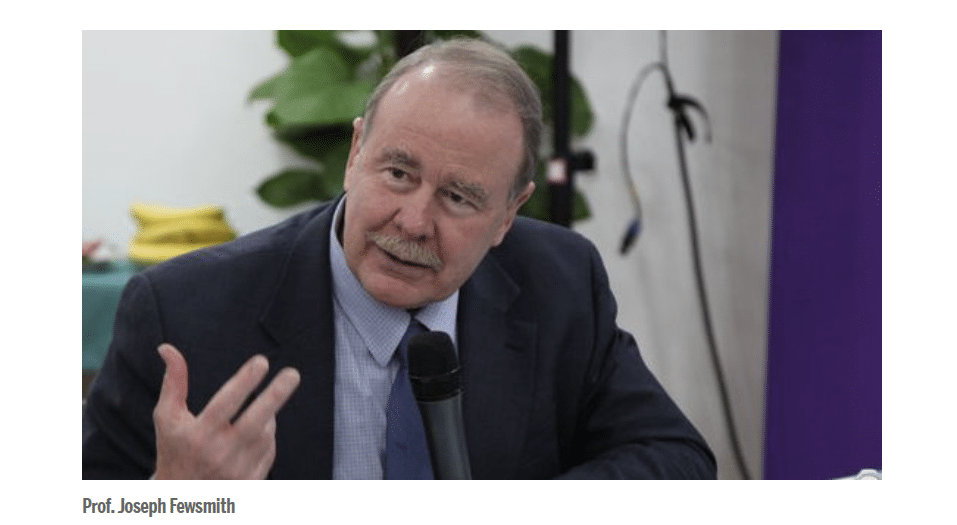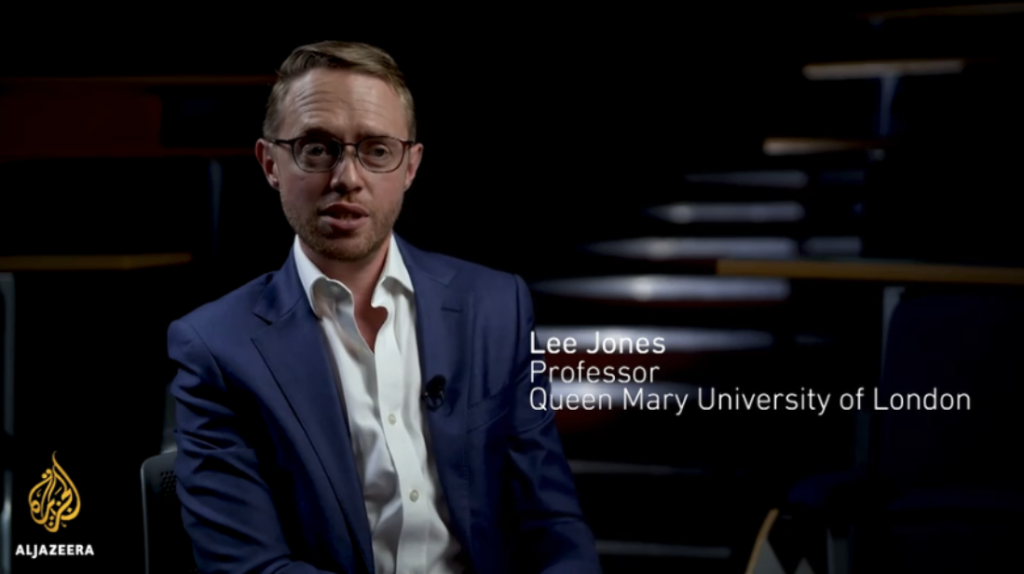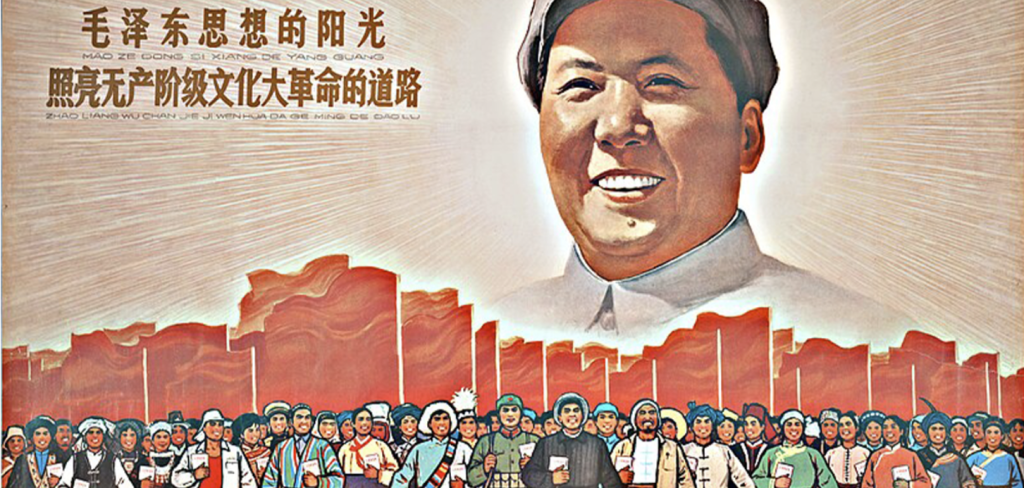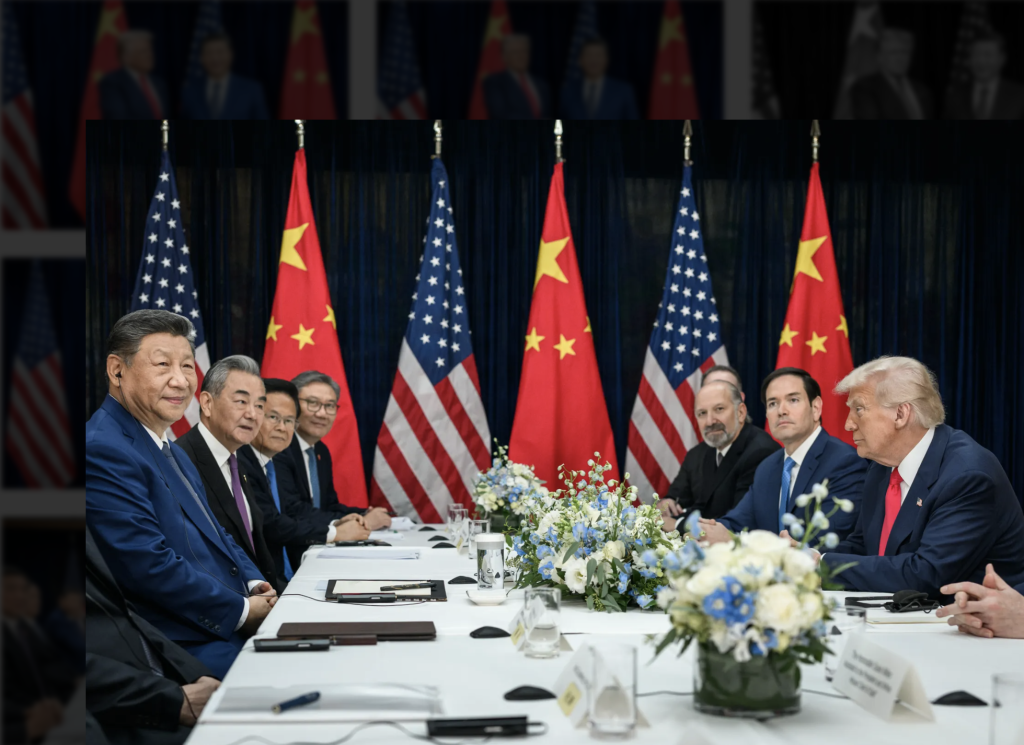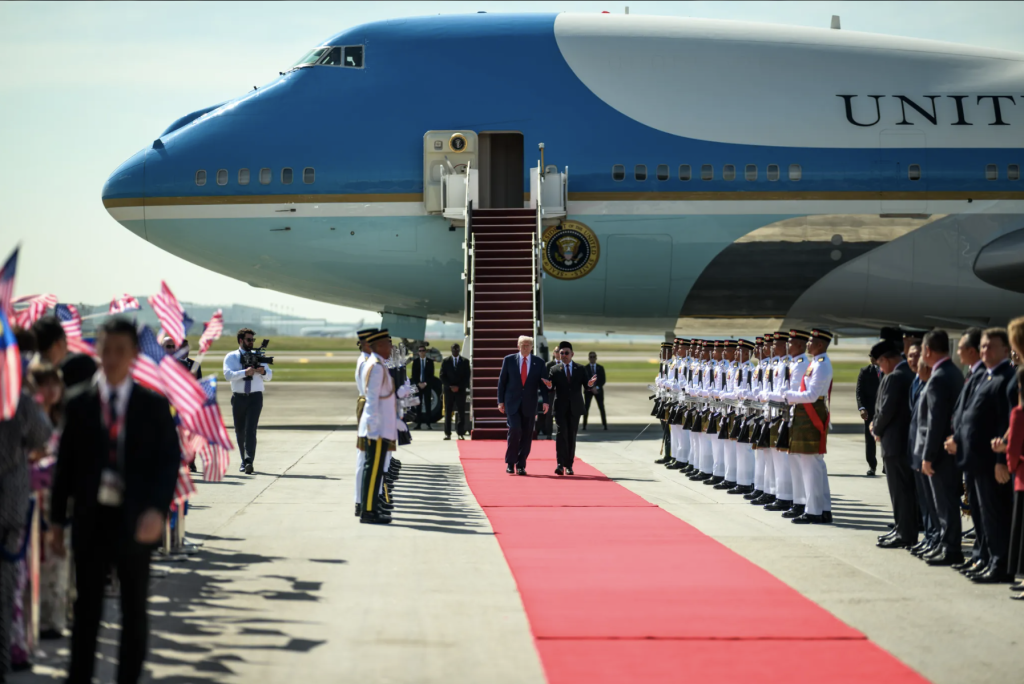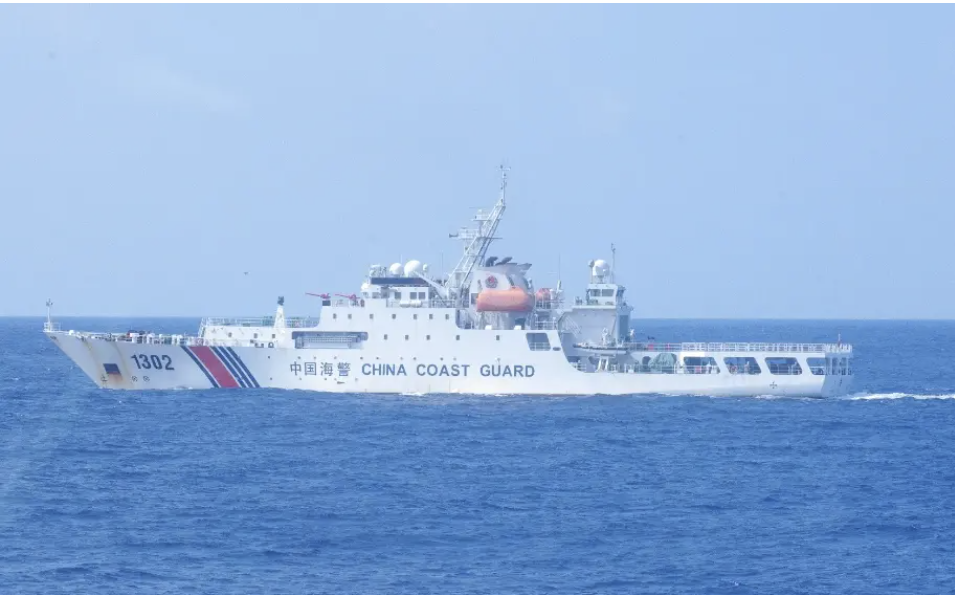Remembering Joseph Fewsmith: The Passing of a Generation of China Hands
Bonnie Glaser: Hong Kong Human Rights Act Won’t Affect the Trade Deal
This interview was conducted jointly by Juan Zhang of the U.S.-China Perception Monitor and Shannon Tiezzi of The Diplomat, transcribed by Rob La Terza.
1) If the poll predictions in Taiwan are correct and President Tsai is re-elected, how will her reelection impact cross-strait relations? Conversely, if Han Kuo-yu wins, do you think cross-strait relations will markedly improve?
If Tsai Ing-wen is reelected, there are several scenarios for the future of cross-strait relations. The best case would be that Beijing decides it has to deal with the DPP government and begins quiet talks with representatives of the Tsai administration to find a path forward, perhaps reaching an understanding for a new formulation of cross-strait relations other than the 1992 consensus. A second scenario would be continuing the status quo. Official dialogue would remain frozen. China would continue to impose economic, military, and diplomatic pressure on Taiwan but continue its policy of pursuing peaceful unification using a mixture of carrots and sticks. Improving cross-Strait relations would not be President Xi’s top priority. The third scenario is the worst-case. Xi could grow impatient and attempt to compel Taiwan to reunify, possibly using military force. This outcome is unlikely in the near-term, in my view. Tsai will likely continue to be a cautious leader and avoid provoking Xi. Ultimately, a decision to use force could also be driven by internal factors on the mainland. If Han Kuo-yu wins (unlikely but not impossible), the official cross-strait dialogue including negotiations on economic agreements, would probably resume. However, I don’t think it would be a warm relationship. Han Kuo-yu has said a few things that Beijing finds objectionable. For example, he has said there will not be Beijing-Taipei peace talks unless Beijing renounces the use of force. He has clearly ruled out “one country, two systems” as a formula for cross-strait unification, and he has said that the differences between the two sides of the strait should be left to the next generation. This contradicts Xi Jinping’s stated wish at the beginning of his tenure as China’s paramount leader not to pass on the problems in cross-strait relations to the next generation. I think there would be a limit to any improvement in cross-strait relations even if Han is elected president.
2) There is optimism in the markets about the “phase 1” U.S.-China trade deal, but many analysts are skeptical that there will be a real breakthrough. What’s your prediction for U.S.-China trade relations in the next year, leading up to the 2020 presidential election?
I think it’s uncertain whether the U.S. and China will successfully complete a phase 1 deal. The prospects for a deal significantly decreased with the cancellation of the APEC meeting- the elimination of the deadline reduced the pressure to reach a deal. Another problem is that both sides are increasing their demands because each side believes they have leverage over the other. China believes that President Trump needs a deal politically and President Trump believes that China needs a deal economically. The Chinese side apparently wants a tariff rollback and does not want to sign a phase 1 deal that leaves all the tariffs in place. The U.S. demands an ironclad promise of massive agricultural purchases and an enforcement mechanism for intellectual property protections. We’re now in the runup to the next round of tariffs scheduled for December 15, and we don’t know if those tariffs will be delayed. If the tariffs are imposed on schedule, the prospects of a deal will plummet. President Trump has said that he would like to sign a deal and Xi Jinping recently met Americans visiting for the Bloomberg Economic Forum and said that he would like a deal that is based on equality and mutual respect. Both sides are still talking. I’m not convinced that the president’s signing of the Hong Kong Human Rights and Democracy Act will affect the trade deal. Reaching a phase 1 deal would be an important starting point to reach a trade truce and possibly prevent future escalation, but the prospects of closing a deal are decreasing. As we approach the U.S. presidential election, it will become even harder to reach a deal.
3) The Trump administration has issued several documents pointing to China as a major strategic competitor for the United States, yet as has often been the case in the past, flashpoints in the Middle East and elsewhere continue to draw focus away from Asia. To what extent has the Trump administration been acting on its stated concerns about China’s growing power?
I think the Trump administration’s formulation of a strategy to respond to perceived challenges from China is a work in progress. Changes can’t be made overnight in any government or bureaucracy, so this is no surprise. Some important steps have been taken, such as efforts to work with U.S. allies to provide financing for high-quality infrastructure projects for potential recipient countries in the Indo-Pacific. The U.S. has adopted legislation to increase scrutiny of Chinese investments in the U.S. and to tighten export controls governing which U.S. technologies can be sent abroad. There have been many investigations into technological espionage. The Department of Justice has a laser-like focus on this problem. The U.S. has also mounted more frequent and more effective freedom of navigation missions in the South China Sea. I would also highlight some of the Trump administration’s bureaucratic changes. For example, the State Department’s Global Engagement Center has established a China section. The Department of Defense has established the new position of a deputy assistant secretary of defense for China. There’s also a new section of the State Department dedicated to enhancing U.S. competitiveness and a China initiative at the Department of Justice. These programs are worth watching. To an extent, the U.S. is still distracted by the Middle East. It still has not devoted sufficient resources to its Free and Open Indo-Pacific strategy, but the strategy is a work in progress that will continue to develop and evolve.
4) President Tsai Ing-wen has introduced the New Southbound Policy when she took office in 2016. What is your assessment of this policy? Have PRC interests been significantly hurt by this policy in the South and Southeast Asia regions and with other related countries?
The New Southbound Policy is aimed at more deeply integrating Taiwan into the broader Indo-Pacific region- essentially strengthening people to people talks and economic relations with the 18 New Southbound Policy target countries. I don’t think it’s aimed at harming Chinese interests, but rather aimed towards promoting Taiwan’s interests. Beijing doesn’t like to see Taiwan expanding its relations with countries in the region, but even China would probably say that the PRC’s economic and political interests have not been damaged so far. Of course, there have been no countries that have shifted their diplomatic allegiance from China to Taiwan. That’s not the aim of Taiwan’s policy. The New Southbound Policy has been a work in progress during Tsai’s first term. Taiwan has developed a detailed roadmap with specific policies. For one, Taiwan has sought to expand trade and investment with the target 18 nations through initiatives such as establishing a series of funds to promote business investments and infrastructure development through credit lines and investment funds, credit guarantees, and financing for small and medium enterprises. Taiwan has tried to update and improve its economic agreements with these countries, successfully with India and the Philippines. It has thus far been unable to sign free trade agreements with any other New Southbound Policy countries. When Ma Ying-jeou was president, Taiwan signed free trade agreements with New Zealand and Singapore. So far, the Tsai administration has had little luck in that area, partly because Beijing has opposed any country’s attempt to sign free trade agreements with Taiwan. Taiwan has had some success with tourism since it simplified visa procedures for many of the New Southbound Policy countries. In 2016, tourism from those countries increased year-on-year by roughly 15 percent, with significant increases coming from Thai, Vietnamese, and Filipino tourists. Another area of progress has been student exchanges. There’s a New Southbound Talent Development program designed to foster bilateral talent exchanges. There have been more scholarships granted to students from New Southbound Policy countries and more scholarships in those countries have been granted to Taiwanese students to pursue academic and professional opportunities. If Tsai is reelected, we will see more progress on the New Southbound Policy since she will continue to make it a top priority.
5) The U.S.-China relationship has encountered many difficulties in recent years. Is the current state of bilateral relations inevitable, given the roots of the two countries’ rivalry? What are the prospects for this relationship?
I’m not very optimistic about the U.S.-China bilateral relationship in the near term, even if a phase 1 trade deal is reached. There are multiple conflicts of interest between the two countries, and in some respects the power gap between the U.S. and China is shrinking. Each country is taking actions that increase the other country’s perception of it as a threat. It’s a classic security dilemma, as each country is taking steps to protect its interests, which are then seen by the other country as a threat that requires a response.. It becomes a process of reciprocal escalation of actions perceived as threatening by both sides. China is unlikely to agree to change its economic structure, and it is seeking to dominate key advanced technologies through means the U.S. views as violations of international trade rules and unfair competition. This problem is likely not going to be resolved. China also has a civil-military fusion strategy, so technological advancements will likely be translated into military capabilities and intensify friction in the military realm. We already see significant military competition, especially around China’s periphery in the form of freedom of navigation missions and China’s moves to control the sea and airspace in the South China Sea. This competition creates the potential for confrontation and even skirmishes. We can expect to see escalating space and cyber competition. Human rights have recently emerged as a contentious issue in the relationship. The 400 pages of documents released by the New York Times about the Uighur “reeducation” or internment camps in Xinjiang will likely prompt the U.S. to act, even imposing sanctions on individual Chinese officials. Disagreements on Taiwan is another conflict of interest. Tensions will increase as the U.S. takes steps to strengthen Taiwan’s deterrence and ensure China is not confident in its ability to seize and hold Taiwan by force, and as the U.S. works to strengthen Taiwan’s voice in the international community and autonomy. Another area is Hong Kong. The Human Rights and Democracy Act, recently signed by President Trump, calls for the U.S. to revoke Hong Kong’s special trade status if Beijing fails to maintain the freedoms guaranteed to Hong Kong under one country, two systems. China views this as interference in its internal affairs and it will increase friction in the relationship. Ideology presents another potential area of competition between the two countries. Ideology presents another potential area of competition. Xi Jinping has said he would like to lead global governance reform and has urged other countries to see China’s development model as an option. These could be early indications of a greater ideological competition between the two countries.
6) What is your interpretation of the recently released State Department report titled “Free and Open Indo-Pacific: Advancing a Shared Vision”? Does the report bring new and important information?
The newly released report is an update on the Free and Open Indo-Pacific strategy’s implementation rather than a strategy document. One could call it a fact sheet on U.S. government engagement with countries in the region. Its most important contribution is its clear articulation of the four goals of the Free and Open Indo-Pacific strategy: respect for sovereignty and independence of all nations, peaceful resolution of disputes, free, fair, and reciprocal trade based on open investment, transparent agreements and connectivity, and adherence to international law including freedom of navigation and overflight. The report includes excellent detail on U.S. initiatives to provide Indo-Pacific partner nations with alternatives to BRI loans and promote transparent, non-coercive, high quality infrastructure investments in the region. This is the area in which the Trump administration has focused the most effort and made the most progress. The Trump administration established the International Development Finance Agency and established the Blue Dot Network, a program that would certify high-quality infrastructure projects in cooperation with Japan and Australia. This is a work in progress. There hasn’t been as much progress in areas such as the South China Sea, where the U.S. has increased freedom of navigation operations but is still struggling to establish an effective strategy to help smaller claimants in the region defend their claims to energy and fish inside their exclusive economic zones. More efforts in this area are still needed.
This transcript has been edited for brevity and clarity.


